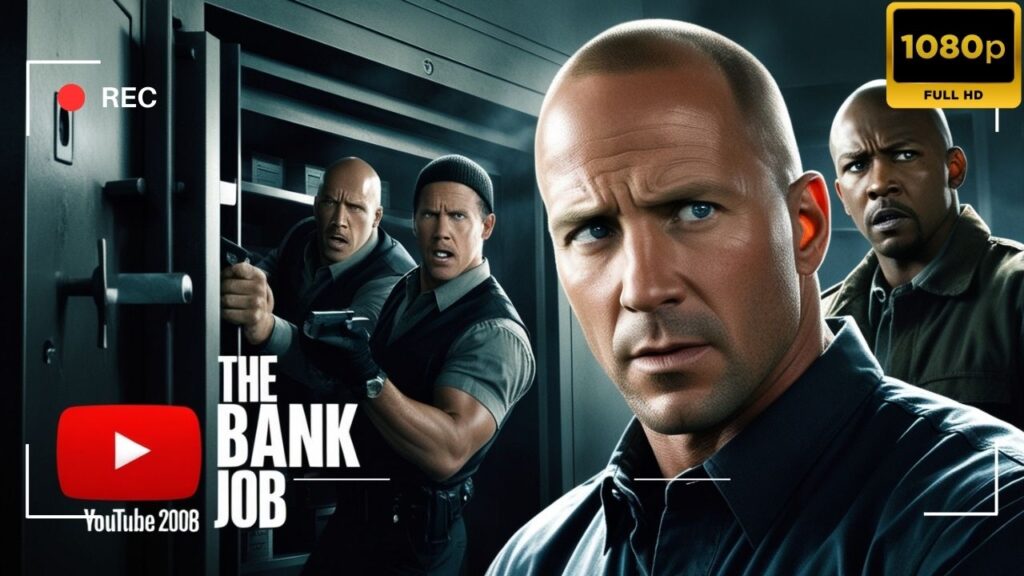Hey, just so you know, some of the links on this site are affiliate links. That means I may earn a small commission if you buy something through them. It doesn’t cost you anything extra, and it helps me keep this site running. Thanks for your support!
“The Bank Job” (2008) is a heist thriller that has captivated audiences with its blend of suspense, action, and historical intrigue. Directed by Roger Donaldson and written by Dick Clement and Ian La Frenais, the film is based on the real-life 1971 burglary of Lloyds Bank on Baker Street in London. Starring Jason Statham as Terry Leather, a small-time car dealer turned bank robber, the movie takes viewers on a thrilling journey through one of the most audacious heists in British history12.
In this blog post, we’ll delve into the details of “The Bank Job,” exploring its storyline, cast, and the real events that inspired it. We’ll also provide insights into the film’s production, reception, and lasting impact on the heist genre. Whether you’re a fan of true crime stories or just love a good thriller, this post will offer a comprehensive look at “The Bank Job.”
Director and Writers
Director: Roger Donaldson
Roger Donaldson, known for his work on films like “The World’s Fastest Indian” and “Thirteen Days,” brings his directorial expertise to “The Bank Job.” Donaldson’s ability to create tension and maintain a gripping narrative is evident throughout the film, making it a standout in the heist genre.
Writers: Dick Clement and Ian La Frenais
The screenplay for “The Bank Job” was crafted by the talented duo Dick Clement and Ian La Frenais. With a history of successful collaborations, including “The Commitments” and “Still Crazy,” Clement and La Frenais bring their knack for storytelling and character development to this thrilling heist movie.
Stars and Cast
Jason Statham as Terry Leather
Jason Statham leads the cast as Terry Leather, a struggling car dealer who gets drawn into the world of high-stakes bank robbery. Statham’s performance is both charismatic and intense, perfectly capturing the desperation and determination of his character.
Saffron Burrows as Martine Love
Saffron Burrows plays Martine Love, an ex-model with connections to the British Security Services. Her character’s involvement in the heist adds layers of intrigue and complexity to the plot.
Supporting Cast
The film features a strong supporting cast, including Stephen Campbell Moore as Kevin Swain, Daniel Mays as Dave Shilling, and James Faulkner as Guy Singer. Each actor brings depth and authenticity to their roles, contributing to the film’s overall success2.
Release Date and Reception
“The Bank Job” premiered at the Glasgow Film Festival on February 19, 2008, and was released in the UK on February 29, 2008, followed by a US release on March 7, 20081. The film received mostly positive reviews from critics, who praised its engaging storyline, strong performances, and historical accuracy. It grossed $66.1 million worldwide, making it a commercial success1.
Storyline and Plot Summary
Plot Summary
Set in 1971, “The Bank Job” follows Terry Leather and his team of amateur criminals as they plan and execute a daring heist at a Lloyds Bank branch on Baker Street. The target: a room full of safety deposit boxes containing millions in cash and jewelry, along with a treasure trove of dirty secrets. Unbeknownst to Terry, the heist is orchestrated by British Security Services to retrieve compromising photos of Princess Margaret, held by black militant gangster Michael X12.
Intrigue and Suspense
The film masterfully weaves together elements of suspense, drama, and historical intrigue. As the heist unfolds, the gang faces numerous challenges, from tunneling into the vault to evading the police. The discovery of the compromising photos adds a layer of complexity, as Terry and his team realize they are entangled in a web of political corruption and scandal1.
Taglines and Genres
Taglines
- “The true story of a heist gone wrong… in all the right ways.”
- “The robbery that shook London and revealed hidden secrets.”
Genres
“The Bank Job” falls into multiple genres, including heist, thriller, crime, and drama. Its blend of action and historical elements makes it a unique and compelling film that appeals to a wide audience2.
Certificate and Filming Locations
Certificate: R
The film is rated R for violence, language, and some sexual content. Its mature themes and intense scenes make it suitable for adult audiences.
Filming Locations
“The Bank Job” was primarily filmed in London, capturing the city’s iconic streets and landmarks. Key locations include the actual Baker Street, where the real-life heist took place, adding authenticity to the film’s setting1.
In-Depth Analysis
Historical Context
The real-life 1971 Baker Street robbery was a significant event in British history, involving a group of amateur criminals who successfully tunneled into a bank vault. The heist made headlines for a few days before being suppressed by a government-issued D-Notice, which prevented the press from reporting on the details. This element of secrecy and the involvement of high-profile figures add to the film’s intrigue1.
Character Development
One of the strengths of “The Bank Job” is its character development. Terry Leather’s transformation from a struggling car dealer to a determined bank robber is portrayed with depth and nuance. The supporting characters, each with their own motivations and backstories, add richness to the narrative, making the audience invested in their fates2.
Conclusion
“The Bank Job” (2008) is a standout film in the heist genre, offering a thrilling and engaging portrayal of one of London’s most infamous bank robberies. With strong performances, a gripping storyline, and historical intrigue, it remains a must-watch for fans of true crime and thriller movies. Whether you’re revisiting the film or discovering it for the first time, “The Bank Job” promises an unforgettable cinematic experience.



